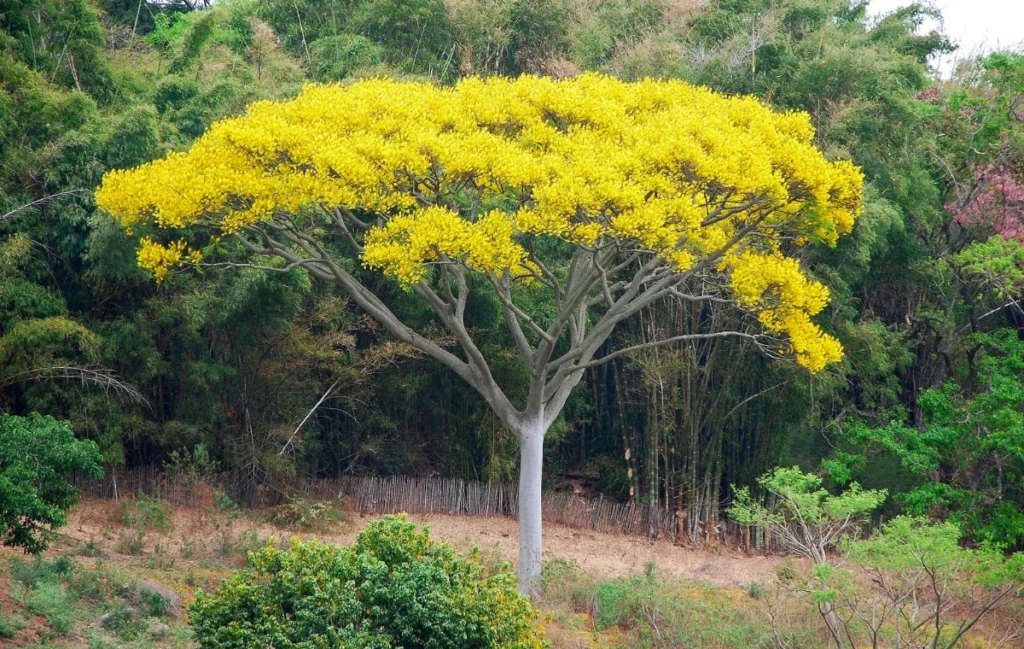The Brazilian Fern Tree (Schizolobium parahyba) is a large deciduous tree, easily reaching 98 feet (30 meters) in height. It naturally occurs in dense and seasonal deciduous rainforests and is exclusive to the Atlantic Forest. The genus name Schizolobium is derived from the Greek words “schizo“, meaning divided, and “lobium“, meaning pod, referring to the separation between the inner and outer layers of the legume-type fruits when mature. The specific epithet parahybae honors the Paraíba River, where the species was first sighted by botanist José Mariano Vellozo in 1825.

Its trunk is straight, elegant, and thick, reaching about 131 feet (40 meters) in height, with branches only at the top, and may have buttress roots. The bark is gray to greenish, smooth, with lenticels and scars from falling leaves. Its crown is tall and open, providing little shade. The leaves are alternate, large, about 3.3 feet (1 meter) long, and fall over time. They are bipinnately compound, with small, elliptical, and opposite leaflets.
The inflorescences are panicles, appearing in spring and early summer, in numerous dense, erect clusters of very showy yellow flowers. The fruits mature in autumn and are large, bivalve pods, obovate in shape and brown in color. Each carries only one large, smooth, oblong, and hard seed, surrounded by a papery wing that disperses by the wind.

The Brazilian Fern Tree is an impressively fast-growing tree, considered one of the fastest in the world, with the capacity to reach an incredible 20 feet (6 meters) in one year. It is suitable for extensive gardens, parks, industrial areas, and farms, transforming the landscape in just a few years due to its rapid growth. Besides the sculptural aspect of its trunk and crown, this beautiful tree also delights us with spectacular flowering.
Its wood is light, soft, and suitable for box making, crafts, construction, and the traditional carving of canoes. With a yield of 21,188 cubic feet (600 cubic meters) of wood every 10 years per hectare, its use as a source of cellulose is also being studied. The large and hard seeds are widely used in crafts, as beads and buttons. It is a pioneer species, meaning it grows well in degraded areas with low fertility and shade. For this reason, the Brazilian Fern Tree is recommended for the initial recovery of degraded areas. Additionally, its flowering is attractive to bees.

With its large size and rapid growth, combined with its fragile wood and natural shedding, the Brazilian Fern Tree is not recommended for urban environments. It is a mistake to plant this species on sidewalks, parking lots, or central reservations, where accidents from falling branches and breakages during storms are not uncommon. Therefore, its cultivation should be reserved for large areas, where it can develop in all its splendor without causing problems.
It should be cultivated in full sun, in fertile soil enriched with organic matter, and regularly watered during the first year after planting. A hygrophilous plant, it prefers moist locations such as riverbanks and can tolerate waterlogging. It propagates by seeds, with dormancy breaking through mechanical scarification (the seed coat should be worn down on the opposite side of the hilum), sulfuric acid scarification, or immersion in hot water. The seeds remain viable for many years if stored in a cool and airy place.



